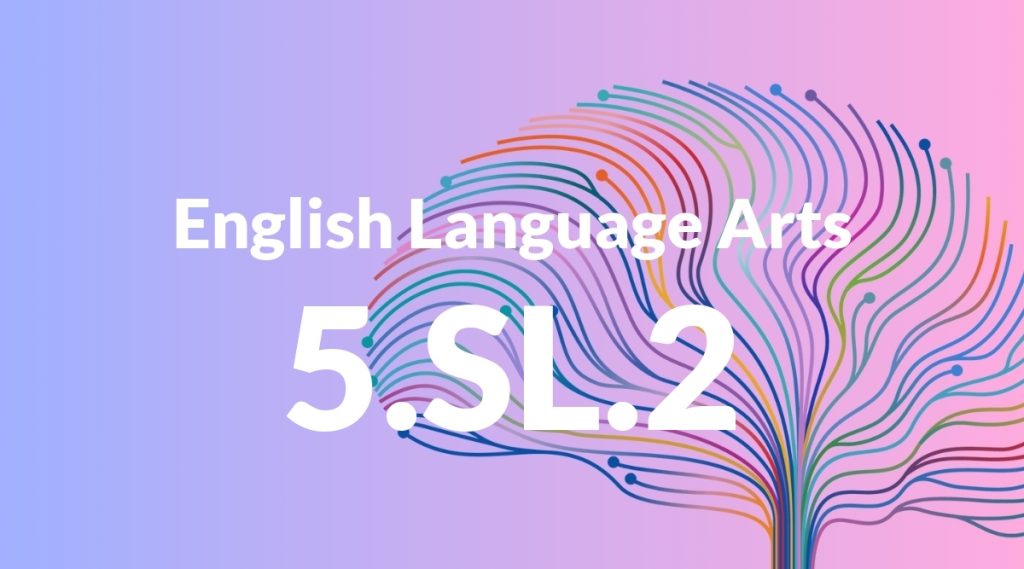Standard: 5.SL.2 – Summarize a written text read aloud or information presented in diverse media and formats, including visually, quantitatively, and orally.
Grade level: Grade 5
Subject: English Language Arts
Domain: Speaking & Listening
Teacher Overview
This standard emphasizes the ability to summarize information presented in various formats, including written, visual, quantitative, and oral. It is crucial for developing comprehensive listening and analytical skills, which are essential for effective communication and critical thinking. Students should be able to identify main ideas and key details in texts and have experience with different media formats. They should also have basic listening comprehension skills.
Mastering this standard prepares students to critically evaluate and compare information from different sources, enhancing their communication and analytical skills.
Common Misconception 1
A common misconception is that summarizing means repeating everything verbatim. This is incorrect because summarizing involves condensing information into its main ideas and key points, rather than retelling the entire content.
Intervention 1
An effective intervention is to provide guided practice in identifying main ideas and key details, and then using those to create concise summaries. Use graphic organizers to help students visually separate main ideas from supporting details.
Common Misconception 2
Another misconception is that visual and quantitative information doesn’t need summarizing. This is incorrect because summarizing these formats helps in understanding and communicating the essential information they present.
Intervention 2
Provide practice in summarizing data from charts and graphs. Use real-world examples to show how summarizing visual and quantitative information is crucial for effective communication and decision-making.
Prerequisite Knowledge
Students should have basic skills in listening comprehension, identifying main ideas and key details in texts, and familiarity with different media formats such as videos, charts, and oral presentations.
Subsequent Knowledge
After mastering this standard, students will be able to critically evaluate and compare information from different sources, enhance their ability to communicate effectively, and develop stronger analytical skills.
Instructional Activities
- Watch a short documentary and write a summary.
- Summarize a story read aloud in class.
- Create a summary of information presented in a bar graph.
- Listen to a podcast episode and write a summary.
- Summarize key points from a news report.




